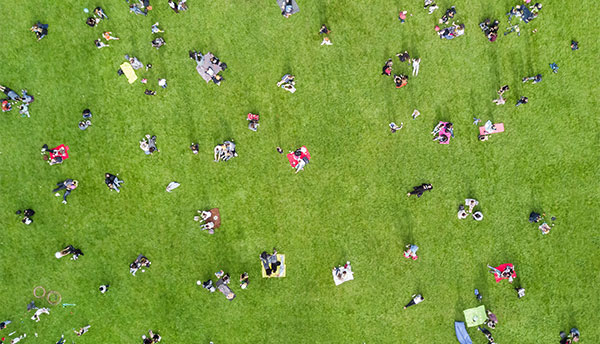Story No.3 Custom-made technology

To perform more precise surgery
A method of treatment of cases of deformity healing, after upper-extremity fractures is to cut off part of the bone, correct the bone orientation, and re-fix the bone with metal screws or plates. Conventional surgical methods involve two-dimensional surgical planning based on radiographic images and manual osteotomy, relying on the surgeon's experience and intraoperative radiography for correction. However, as bones are 3D deformations, accurate correction requires time, and the surgical method relies heavily on the surgeon's experience and intuition.
Custom-made product development by improving image-processing technology
With improvements in image processing technology, it is becoming common to perform 3D preoperative planning using medical images by CT imaging. Therefore, we developed custom-made surgical guides and plates that are optimized for the characteristic bone morphology of each patient, using a tool that can create a preoperative plan to match the deformed bone to the normal one. The custom-made surgical guide is a plastic osteotomy guide fabricated by using a 3D printer and fitted to the characteristic points of the bone, enabling accurate surgical osteotomy according to the preoperative plan, regardless of the surgeon's experience and proficiency. After osteotomy, a custom-made osteosynthesis plate is placed on the bone surface and fixed with screws to correct and fix bone orientation according to the preoperative plan. Hence, by combining pre-operative planning software and 3D modeling technology, it is possible to achieve accurate 3D correction and internal fixation (re-fixation of the bone) for cases of deformity healing.


- Accurio Deformity Correction System Japanese medical device manufacturing and marketing approval number: 30100BZX00199000
Efforts to further improve patient quality of life (QOL)
Advances in image analysis technology have made it possible to analyze bone morphologies from various perspectives, such as by country (race), sex, and disease, which contributes to the design of orthopedic implants and the availability of a wider range of size variations. However, severe deformities and unique cases are difficult to handle with ordinary products; thus, the need for optimal product design and preoperative planning for each patient's case is also discussed to further improve patient QOL.
In 2008, we began jointly participating in basic research in the field of biomechanics, including 3D orthopedic simulation, which was conducted mainly by Osaka University. After being selected as a Super Special Zone, in 2009 we started full-scale research on custom-made treatment methods for deformity correction as part of the JST (Japan Science and Technology Agency) A-STEP "3D Surgical Support Components and Systems for Future Athletic Implants." Thus, we proceeded with development activities, including accuracy verification through overseas bone donation experiments. Overseas cadaver experiments were conducted to verify the accuracy of the treatment method.
After confirming the effectiveness and safety of this technology, a custom-made surgical guide and custom-made osteosynthesis plate were developed as deformity correction custom-made treatments for distal radius and humerus in 2013–2014. And we have launched Japan's first custom-made product from 2014.
In 2015, with support from Japan’s AMED, we expanded the application to forearm diaphysis and conducted clinical research on custom-made treatment methods for deformity correction using custom-made surgical guides and bone-jointing plates with high design flexibility for difficult cases (more complicated deformities). As an advanced medical treatment, we were able to confirm good clinical results in cases of deformity healing of distal radius and forearm diaphyseal fractures, and internal recoil elbow.
Based on these results, in 2019 we obtained marketing approval for the Accurio Deformity Correction System, a new medical device that combines a custom-made surgical guide and osteosynthesis plate. It has been covered by health insurance (a new drug price has been set) and is currently in full-scale clinical use in Japan. The practical application of surgical instruments and products with a high design flexibility is expected to dramatically improve the outcomes of deformity correction custom-made treatment methods for upper limbs in the future.
Future Deployments
This technology has very high potential and expandability as a basic technology for custom-made joint replacement products and is attracting attention not only in Japan but also worldwide. We are promoting market research and R&D in Asia, where there are many applicable cases of deformity.
References
- Tsuyoshi Murase. Treatment of elbow and forearm diseases based on AI and biomechanics research findings. Journal of the Japanese Orthopedic Society. 2022, 96, pp. 247-257
“Accurio” is registered trademarks of Teijin Nakashima Medical Co., Ltd. in Japan.

